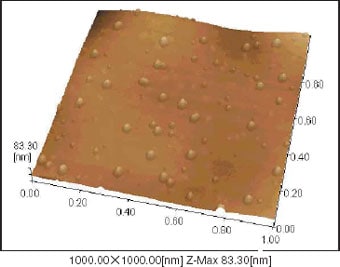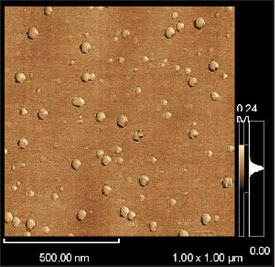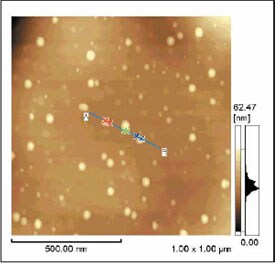Observation of Film Surfaces
This is the negative surface of instant-camera film. Using an SPM (scanning probe microscope), it is possible to observe the 3D form of this surface in air, without any deposition or destruction, simply and precisely. The fact that particles of approx. 10 nm in diameter can be identified on the surface illustrates the formidable level of spatial resolution that the SPM can attain. (See Fig. 1.)
Using a viscoelasticity measurement system, it is possible to obtain data, such as COS images* (see Fig. 2), that illustrate physical properties. In Fig. 2, the differences in physical properties between the particles and the surrounding areas are visualized.
Processing the image data makes it possible to obtain 3D display and vertical differences can be obtained from cross-section profiles. (See Table 1.)
In this way, the SPM offers data that cannot be obtained with optical and electronic microscopes.

Fig.1 3D Image

Fig.2 COS Image

Fig.3 Topographic image

Table 1Cross-Section Profile


